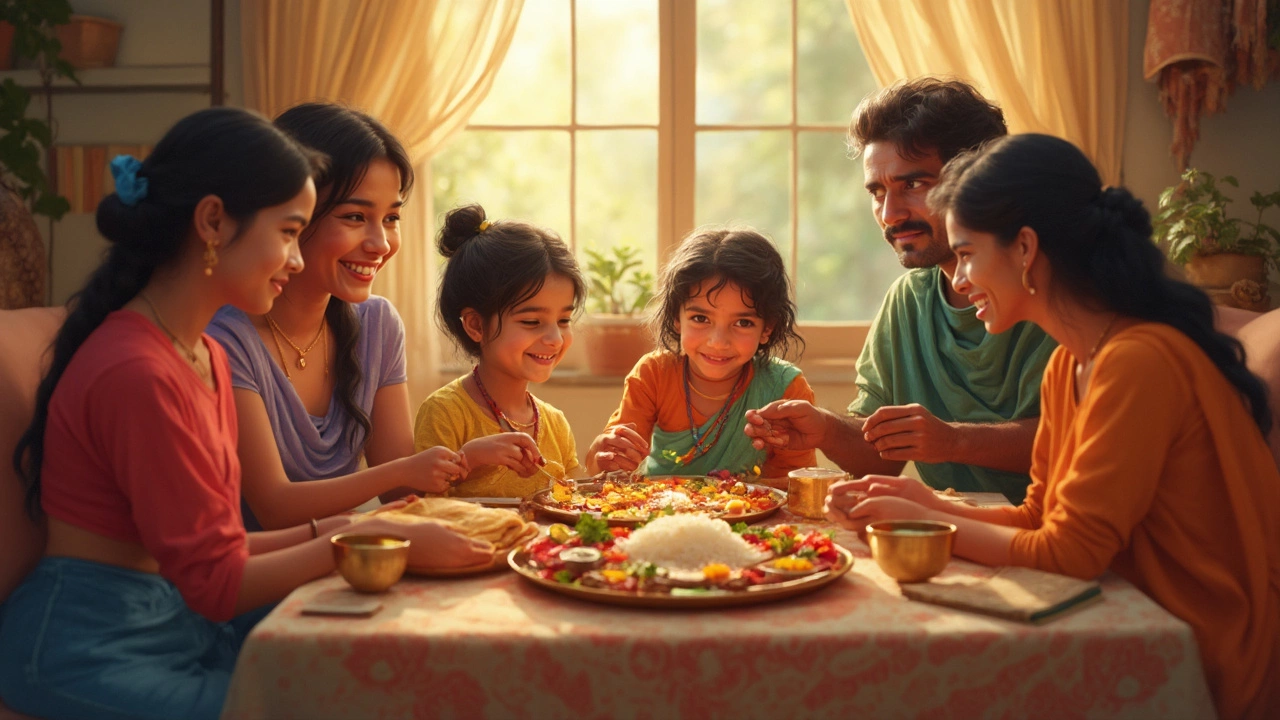Most Common Indian Meal: What Indians Eat Every Day
If you’ve ever wondered what an average Indian kitchen looks like, the answer is simple: rice, roti, dal and a veggie side. These four items show up on tables from Delhi to Kochi, and they’re the backbone of most meals. They’re cheap, filling, and can be flavored in countless ways, which is why they survive in every home.
Most families start with a carbohydrate. In the north, wheat flour turns into soft rotis or fluffy parathas. In the south, steam‑cooked rice or light rice dishes like idli take the lead. Both carbs are easy to make in bulk and store well, so you always have a base ready for any accompaniment.
Staple Foods on Every Indian Plate
Dal – Lentils are the protein hero. Whether it’s toor, moong, masoor or chana, the beans are boiled, then tossed with a quick tempering of mustard seeds, curry leaves, garlic and chilies. The result is a hearty, slightly spicy soup that pairs perfectly with rice or roti.
Sabzi or Curry – A vegetable dish rounds out the meal. Common choices are potato bhaji, aloo gobi, bhindi masala, or a simple tomato‑onion gravy. The spices are modest – usually turmeric, cumin, coriander and a pinch of garam masala – so the veggies stay the star.
Pickles & Chutney – A spoonful of tangy mango pickle or fresh coriander chutney adds a zing that lifts the whole plate. These condiments are made in small batches and keep for weeks, so they’re always on hand.
Yogurt or Raita – A cool dollop of plain yogurt mixed with cucumber, cumin and a pinch of salt balances the heat from the spices. It’s a cheap way to add protein and aid digestion.
Quick Ways to Make These Meals at Home
Start with the carb: boil a pot of rice or heat a tawa for rotis while you prep the rest. For dal, rinse the lentils, add water, a pinch of turmeric and a pressure‑cooker timer (10 minutes for most beans). While the dal cooks, heat oil, throw in mustard seeds, curry leaves and chopped garlic, then pour over the cooked dal for that classic “tadka” flavor.
Veggies need just a quick stir‑fry. Cut them into uniform pieces, heat a little oil, add cumin seeds, then the veggies, a dash of salt and the usual turmeric‑coriander blend. Finish with a squeeze of lemon for brightness.
Keep a small jar of pickle and a bowl of ready‑made raita in the fridge – no extra work needed. If you want a fresh chutney, blend a handful of cilantro, mint, green chili, lemon juice and a pinch of salt; it’s ready in under a minute.
These four components—carb, lentil, veg and a side – can be mixed and matched endlessly. Add a boiled egg, a piece of paneer, or a handful of peas for extra protein, and you’ve got a complete, satisfying meal in less than 30 minutes.
Because they’re cheap, adaptable and tasty, these dishes stay at the top of Indian meal lists. Whether you’re cooking for a family of five or just feeding yourself, mastering the most common Indian meal means you’ll always have something warm and comforting on the table.
Most Common Indian Meal: What Do Indians Eat Every Day?
Wondering what the most common Indian meal looks like? This article breaks down the typical daily food people eat across Indian homes. You'll learn why certain dishes are so popular, what goes into a classic Indian thali, and easy ways to recreate these meals at home. Pick up practical tips, fun tidbits, and no-fuss recipes. The info here is meant to make Indian cooking feel more doable for anyone.
